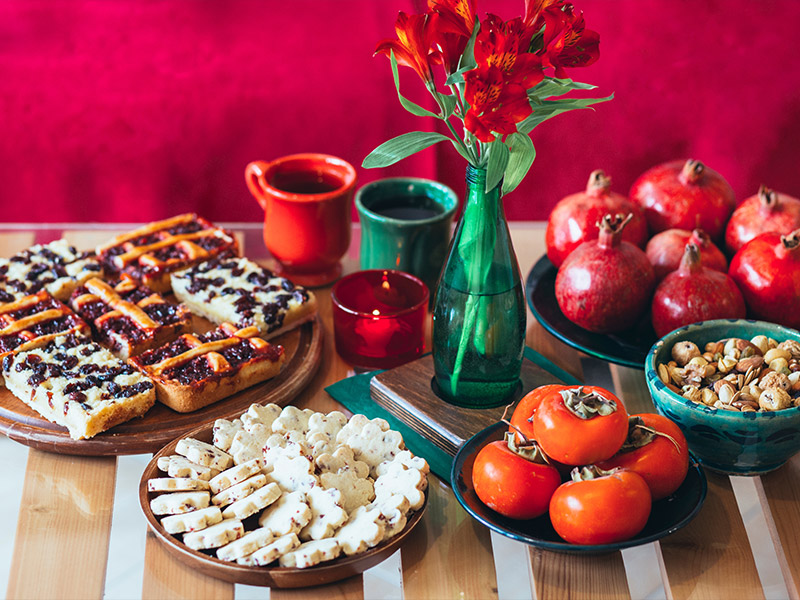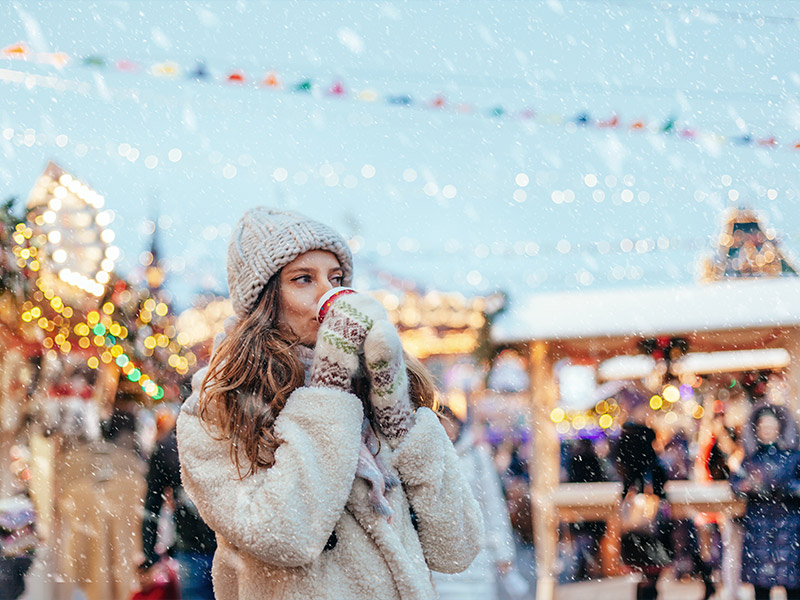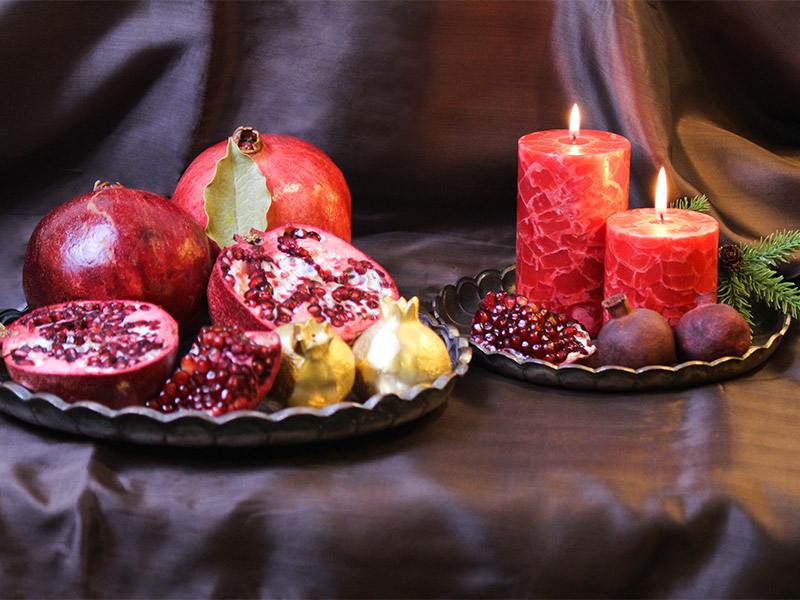Yalda is one of the oldest Iranian festivals recorded in history. It celebrates the passing of the longest night of the year and the subsequent lengthening of the days in the Northern Hemisphere, which coincides with the winter solstice. On Yalda night, Iranian families usually prepare to serve a sumptuous dinner with all kinds of fruit, most commonly, watermelon and pomegranate. During this celebration, it is common to serve snacks, read the Shahnameh (the Persian book of kings), as well as tell stories and fortunes.
Book Iran Air flights from London to Tehran and Tehran to London with Eligasht uk:
History of Yalda
Yalda made its way to the official calendar of Iran in 502 BC during the reign of Darius I and the celebrations held on this night are an ancient tradition. The people of the distant past, whose basis of life was formed on agriculture had to adapt their work and life to the position of the sun and the change of seasons.
They observed that in some seasons, the days are very long and as a result, they could use more sunlight. The light and brightness of the sun was thought of as an agreeable source to fight the darkness of the night and by extension all evil. The people of ancient times, including the Aryan tribes from India and Iran, found out that the shortest days are the last days of autumn and the first nights of winter, and immediately after that, the days gradually get longer and the nights shorter.
Darkness was the representative of evil and as in the longest night of the year, the darkness grows, Iranians would light a fire to ward off all things evil. People gathered and spent the night eating, drinking, rejoicing, dancing, and talking together. The Yalda table was called “Myazd” and included fresh and dry fruit, as well as nuts or so-called Zoroastrian “Lork” which was one of the must-haves for the feast in honor of “Ormazd” and “Mehr” or the sun.
Yalda night was also known as the birthday of the Sun God of justice and war. There are two main narrations of this. First, on this night Mehr, or as mentioned in the Avesta and the writings of the Achaemenid kings, Mithra returns to the world. He, who is one of the ancient gods of India and Iran, lengthens the hours of the day, and as a result, Light overcomes darkness.
Some researchers also believe that a prophet is born on the night of Yalda. In the year 51 of the Parthian kingdom, which coincides with 196 AD, a prophet is born and he is taken out of the water by two dolphins. According to the rituals, water was of special importance.
In both narratives, Yalda night is the night of Mehr’s birth, and this is a remnant of Mehr customs and traditions that were widely common in the eastern Mediterranean, the results of which can be seen, among other things, in the remaining Mehr temples in Palmyra in present-day Jordan.

Yalda in Different Cultures
Yalda or the winter solstice which marks the last night of autumn is a celebration with the aim of keeping the longest night of the year alive and overcoming darkness. On this night, the sun is the furthest from the equator, and therefore technically winter begins in the northern hemisphere and summer in the southern hemisphere. Yalda has been celebrated in many countries and different civilizations following specific customs and rituals throughout history.
Yalda in Iran
For thousands of years, the winter solstice has been used as an excuse to hold ancient rituals. In Iran, since time immemorial, this night has been known as Yalda or Cheleh night. People of Iran spend the longest night of the year together eating snacks and special fruit. Iran’s neighboring countries, such as Afghanistan and Pakistan, treat Yalda almost like Iran.
Yalda in Pakistan
Pakistanis have been spending Yalda with prayers for a long time. Men take a winter bath this night, and it is going to be different from normal baths! This bath needs to be had standing up and take from morning to afternoon on the last day of autumn. But the interesting thing about this bath is that men must have a piece of bread in their hands when they pour water on their heads. After the bath, the celebration begins, which is accompanied by fireworks and continues with a delicious dinner: goat’s stomach!
Yalda in Afghanistan
In Afghanistan, the Yalda celebration is similar to that of Iran; People set a special table for Yalda and fill it with delicious fruit and nuts. The two main fruits on the table are pomegranate and watermelon, whose redness is a symbol of the redness of the sun. People make sure to spend this night with family elders and try to forget their problems at least for one long night.
Yalda in Tajikistan
Yalda, with its 7,000-year history, is also celebrated in Central Asian countries such as Tajikistan. In this country and especially in Farsi-speaking Tajikistan, people celebrate Yalda by gathering around the Yalda table and use pomegranates, watermelons, nuts, and snacks to set and fill the table. Another ritual specific to this night is baking delicious pastries in the shape of living creatures. On this night, the older generation sprinkle some wheat in the yard. They also tell fortunes to predict the events of the coming year.
Yalda in East Asia
Yalda or winter solstice in East Asia means delicious rice bread! East Asian people attach great importance to Yalda and spend this night with special festivities. Since family is very important in East Asia, family members must gather around on this very special occasion.
The Chinese have a special ceremony. In order to spend Yalda, they gather and eat special tea and rice bread. In South Korea, rice bread is had, but the rice bread comes with red beans. Koreans have another interesting custom for Yalda as well, which includes pouring water around the house to ward off evil forces. Chinese legend has it that on this night the spirit of a hunter goes to the house of the villagers to find food for the cold winter.
The Japanese call Yalda “Toji” and spend it with special traditions of their own. First of all, they take a bath to be clean for this special night. They believe that by doing this, negative energies will go away and they will not catch a cold until the end of winter. Eating fruit and vegetables is another part of the Japanese Yalda celebration.
Yalda in Bolivia, Peru, and Ecuador
The people of these three countries have a common custom for Yalda, and that is wrapping a rope around the sun! In order to get their hands on the sun, they go to the top of the mountains to catch the sun in a symbolic ceremony on the rocks! They have been traditionally doing this in order to make the days longer. One of the most famous places in Peru where this is done is the heights of Machu Picchu.
Yalda in Africa
Perhaps the most exciting Yalda ritual ever is the festival that is held in the western regions of Africa. This festival is celebrated with a special yet strange costume that resembles animals or forces such as devils and angels. People go to the streets wearing these costumes and prepare themselves for the winter season by playing music.
Yalda in Russia
Some Russians celebrate Yalda by praying and eating bread, cheese, and honey. They light up the streets on the longest night of the year and make homemade cookies for each other.
Yalda and Christmas
The celebration of the winter solstice was also common among other ancient tribes. In ancient Rome and at the same time as the spread of Christianity, the worship of Sol Invictus (the invincible sun) was very common, and the Romans celebrated his birth during the winter solstice. Sol Invictus had a special role in Roman Mithraism.
Researchers believe that Western Christianity owes its main framework to this religion, which gave stability and shape to the pre-Christian religions of ancient Rome, including Mithraism. Christmas is considered to have developed as a mixture of Saturnalia and the birth of Mithras in ancient Rome during the 4th century AD with the formalization of Christianity and by the order of Constantine as the official birthday of Christ.
During the development of mystery rituals in Europe and the lands under the rule of the Roman Empire and before accepting Christianity, the Romans honored the planet Saturn, the ancient god of agriculture, in a festival called Saturnalia every year on December 17. This celebration lasted for seven days and included the winter solstice. Because the Romans used the Julian calendar in their calculations, the winter solstice day would occur on December 25.
Franz Cumont the Belgian archaeologist and the founder of modern Mithra studies and other like-minded Mithra scholars consider the concepts of Roman Mithraism to be completely derived from Mazdasena and the Iranian god Mithras, but this idea has been severely criticized and revised since the 1970s. Now it has become one of the most controversial issues in the field of religious research in the world of Rome and Ancient Greece.
Mithra’s birthday celebration is not the only ritual that made its way to Christianity. There are many similarities between Christian traditions and Mithraism. Today, all Christians who celebrate the birth of Jesus Christ still keep their fireplaces and candles lit on the day of the celebration, decorate the Christmas tree with small illuminated lights, keep vigil and eat special food; They visit each other and celebrate this occasion with their friends and relatives just like the tradition that ancient Iranians celebrated on Yalda. Christmas and Yalda are just one example of many common beliefs, customs, symbols, stories, and legends that bind people of different nations and religions together.

Wrapping Up
Yalda, when the earth prepares to crown winter, is a night that has been kept alive in the streets and markets of many nations for a long time, where people are getting ready for this ancient celebration. Yalda is a symbol of hope for light, better tomorrows and overcoming darkness, and a chance to value each other and our moments together and to lose yourself in mirth and light.


